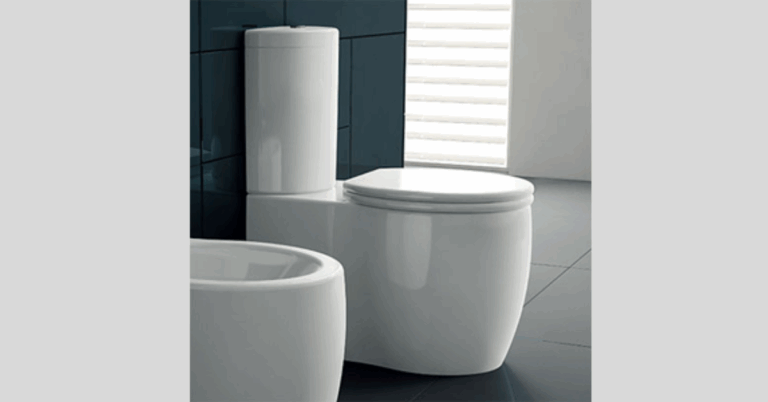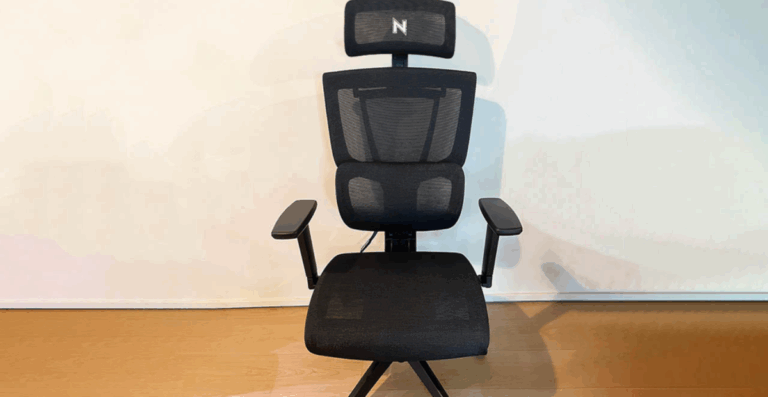Hinomi Review: Is It Worth Your Time & Money?
Ergonomic chairs have become essential for those who spend long hours working, gaming, or studying, and a Hinomi Review at the outset is the best way to understand whether this newcomer holds up against seasoned contenders. In this article, we’ll dive deep into the features, pros, cons, and comparisons of the Hinomi chair (and peers) to help you decide whether it deserves a spot in your home or office.
Introduction: The Ergonomic Throne Race
The world of ergonomic seating is fiercely competitive. With names like Ergomeister, NextChair, Herman Miller, and more dominating the conversation, any new entrant must bring serious value. Hinomi enters the scene promising comfort, adjustability, and aesthetics. But does it deliver?
In what follows, we’ll analyze Hinomi’s build, design, usability, comfort, maintenance, etc., and compare it (where relevant) to other offerings you may have heard of. Let’s begin.
Design & Build Quality
The first impression of any chair is its build, and Hinomi doesn’t disappoint. The frame feels robust, and materials selected seem premium. The base and mechanism components are metal, giving confidence in longevity. The upholstery, whether mesh or padded versions, appears thoughtfully chosen — breathable, durable, and clean-looking.
Where Hinomi stands out is in the attention to small design touches — smooth cable routing for integrated headrests, subtle contours in the lumbar support area, and hidden hinges to avoid visual clutter. The finishing (seams, joints, edges) is neat, which isn’t always a guarantee in chairs in this price range.
Yet, even great builds have tradeoffs. Because Hinomi aims for a balance between durability and affordability, some plastics used in armrests or adjustment levers are lighter than you’d expect from ultra-premium brands. That said, nothing feels fragile or flimsy. For the price point, Hinomi nails the build-to-cost balance.
Ergonomics & Adjustability
A key factor in evaluating any ergonomic chair is just how adjustable and supportive it is across different body types and postures. Hinomi offers a robust suite of adjustments:
-
Seat height & depth adjustment — This allows you to find the ideal thigh-to-shin angle and ensure proper leg circulation.
-
Seat tilt / recline — With tension control, you can lean back comfortably without the chair being either rigid or too loose.
-
Lumbar support — It offers an adjustable lumbar curvature, intended to match the spine’s natural S-shape.
-
Armrest adjustability — The armrests can shift up/down, in/out, forward/backward (3D), which is crucial to reduce shoulder/arm strain.
-
Headrest (if included) — Tilt and height adjustments let you rest your neck without forcing unnatural angles.
One particularly nice feature is how ergonomic adjustments feel smooth and intuitive — knobs turn without catching, levers click decisively, and nothing feels overly stiff. Sometimes in budget chairs, you get jerky or sticky behavior when making fine adjustments; not so in this case.
Among the limitations: some users with very tall or short stature might find the extremes of adjustment insufficient. For instance, the headrest might not reach as high as some tall users prefer, or the lumbar curve might be too aggressive for smaller frames. But for average to above-average height users, the adjustability range suits most needs.
Comfort & Sitting Experience
All the specs and dials mean little if the chair isn’t comfortable in real usage — after 2–8 hours of sitting. In this domain, Hinomi largely succeeds.
Pros in comfort:
-
Good support balance — The seat cushion is firm enough to avoid sagging but soft enough to avoid pressure hotspots even after extended sessions.
-
Breathability — The mesh or hybrid materials help dissipate heat, reducing that dreaded “sweaty back” feeling common in lesser chairs.
-
Recline comfort — Leaning back feels natural, and the tension control lets you “lock in” your preferred recline force without it feeling too loose or too stiff.
-
Dynamic posture encouragement — Because of its adjustability and inherent support, Hinomi subtly encourages micro-movements and posture shifts, which reduces fatigue over long workdays.
Potential downsides:
-
Edge pressure — After many hours, some users may feel mild pressure beneath the thighs where the seat edge meets the leg. This is not a unique flaw to Hinomi, but something to be aware of.
-
Break-in period — Like many chairs, the initial 1–2 weeks could feel a bit stiff until the materials settle. If you choose a very firm setting early, it may seem a little rigid initially.
-
Headrest ergonomics — As mentioned earlier, users at extreme heights may need to compromise on headrest comfort. If your head rests too high or too low, the neck support advantage is reduced.
On balance, though, Hinomi offers a surprisingly comfortable experience for its positioning. It won’t fully match ultra-premium models in every nuance, but it gives many of the advantages at a more accessible cost.
Durability & Maintenance
No matter how great a chair is on day one, durability determines whether it’s a wise investment. Let’s see how Hinomi fares and what maintenance considerations apply.
-
Material wear — The upholstery resists typical wear and tear well. The mesh doesn’t sag prematurely, and padded options don’t lose shape rapidly.
-
Mechanism longevity — The reclining and adjustment mechanisms are solidly made; occasional lubrication on pivot points keeps them smooth over years.
-
Replaceable parts — Good chairs allow you to replace high-stress parts (casters, gas lift, armrests). Hinomi is reasonably serviceable in this regard — you can find replacements or compatible components.
-
Cleaning & upkeep — The materials used resist stains reasonably well. Mild detergent works on spills; avoid harsh chemicals. Mesh is particularly easy to dust off or vacuum.
-
Warranty & support — Check the specific Hinomi model details in your market. A decent warranty can be a safety net. (In many ergonomics markets, 3–5 years is standard for functional components like gas lifts, 1–2 for upholstery.)
Overall, with decent care, Hinomi should last multiple years of daily use without major issues.
Comparisons: Hinomi vs Other Ergonomic Chairs (Ergomeister, NextChair, Etc.)
To properly contextualize Hinomi’s value, it helps to compare it to some known competitors in the region — especially because many buyers tend to pit new brands against long-standing ones.
-
Vs Ergomeister: Ergomeister models often command a premium, with design flair and strong brand backing. In many reviews, Ergomeister may have a slightly more refined build and greater availability of spare parts. However, Hinomi tends to compete aggressively on pricing, offering much of the ergonomics at lower cost. In some cases, the comfort differential may be narrow unless you go for the top-end models in both lines.
-
Vs NextChair (or similar): NextChair and similar boutique ergonomic chairs often emphasize customization, aesthetics, and brand prestige. They may offer more upholstery or finish options, modular components, or more premium materials. The tradeoff is often cost. For users who want solid ergonomics without luxury pricing, Hinomi often hits the sweet spot between mainstream and boutique.
-
Vs Big-Name Brands (Herman Miller, Steelcase, etc.): The classics tend to outshine Hinomi in prestige, advanced engineering, long-established reliability, and resale value. But the price premium is often several times higher. For many users, Hinomi gives most of the functional benefits (adjustability, comfort, support) without paying for branding prestige.
In short: Hinomi may not always beat premium chairs in every detail, but for performance per dollar, it often lands in a strong position.
Best Use Cases & Ideal Users
Understanding who will benefit most (and least) from Hinomi helps you decide whether it’s right for you.
Best for:
-
People working from home or in offices who sit for 6–10 hours daily, seeking ergonomic support without spending a fortune.
-
Medium to above-average height users (say 160–190 cm) who can make full use of the adjustment range.
-
Gamers who need comfort plus flexibility of posture changes.
-
Small offices or studios wanting a solid ergonomic solution without corporate-level budgets.
Less ideal for:
-
Very tall users (over ~200 cm) or very short users (below ~150 cm) who may find the extremes of adjustment inadequate.
-
Specialized use cases (e.g. heavy-duty industrial use, extremely heavy users) without confirming load ratings.
-
Buyers obsessed with high-end materials (like full leather, exotic finishes) or maximum brand cachet — those users might still prefer premium brands.
Pros & Cons Summary
Pros:
-
Solid build quality at a competitive price
-
Broad adjustability (seat depth, recline, lumbar, armrests)
-
Comfortable seating for long durations
-
Good balance between firmness and flexibility
-
Serviceable components and reasonable durability
-
Attractive design, clean aesthetics
Cons:
-
Edge pressure might bother some after long hours
-
Adjustment extremes may not satisfy very tall/short users
-
Break-in period needed
-
Headrest ergonomics are average for extreme heights
-
Not premium brand prestige
Tips to Get the Most Out of Hinomi
-
Customize gradually — Don’t crank all adjustments to extremes immediately. Fine-tune over a few days to find what works best.
-
Switch posture often — Even with a good ergonomic chair, sitting static for long spans is bad. Use recline, lean forward/backward often.
-
Use proper desk alignment — A chair is only one piece. Ensure your desk height, monitor position, and keyboard posture are correct.
-
Lubricate mechanisms yearly — A light oil or silicone spray at pivot joints can keep levers and recline smooth.
-
Check & replace wear parts — Over time, casters, armrests, or cushions may need replacement. Don’t discard the entire chair prematurely.
Final Verdict & Recommendations
When we began with a Hinomi review, the central question was whether this chair could justify itself in a market flooded with strong ergonomic options. After examining build quality, adjustability, comfort, durability, and comparing with peers, the verdict is largely positive.
Hinomi delivers a compelling mix of features, usability, and design at a price point that undercuts or competes with many rivals. It may not be perfect — edge pressure, headrest for extreme statures, and break-in stiffness are minor drawbacks — but for the majority of users, the tradeoffs are acceptable or even negligible.
If your goal is a high-quality ergonomic chair without the extreme premium markup, Hinomi is strongly worth considering. Pair it with good desk ergonomics, and it can serve you well for many years.







